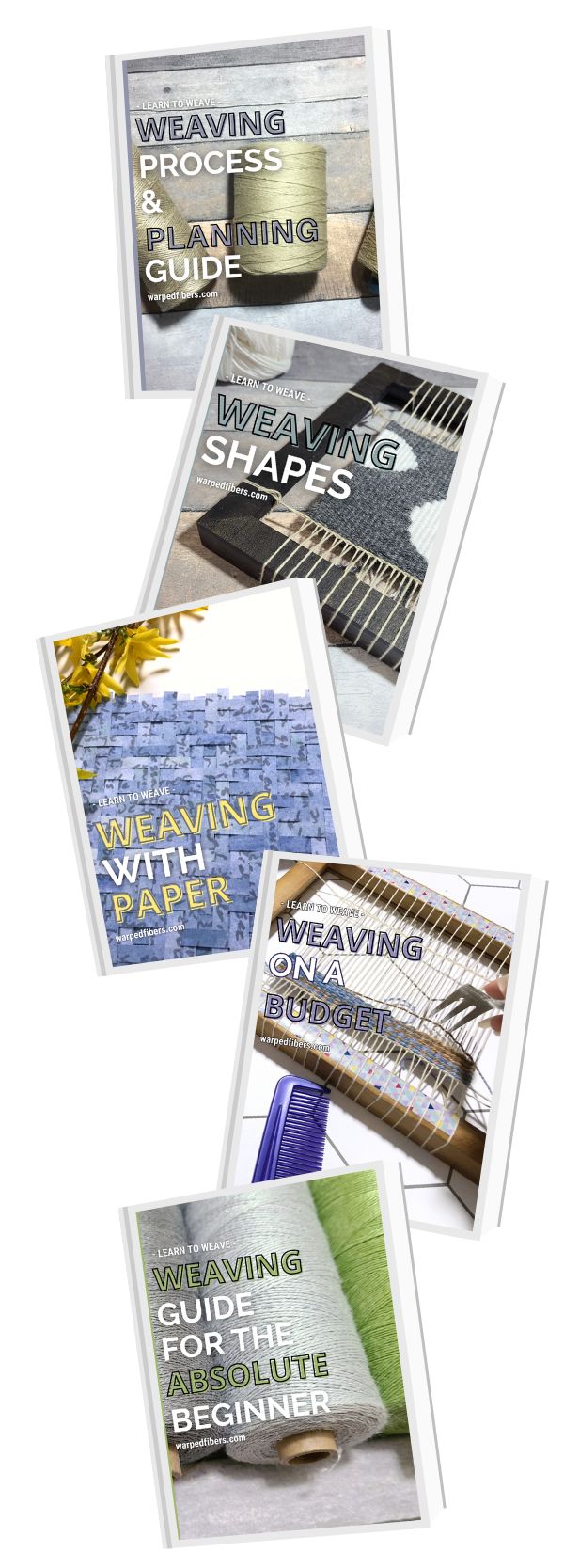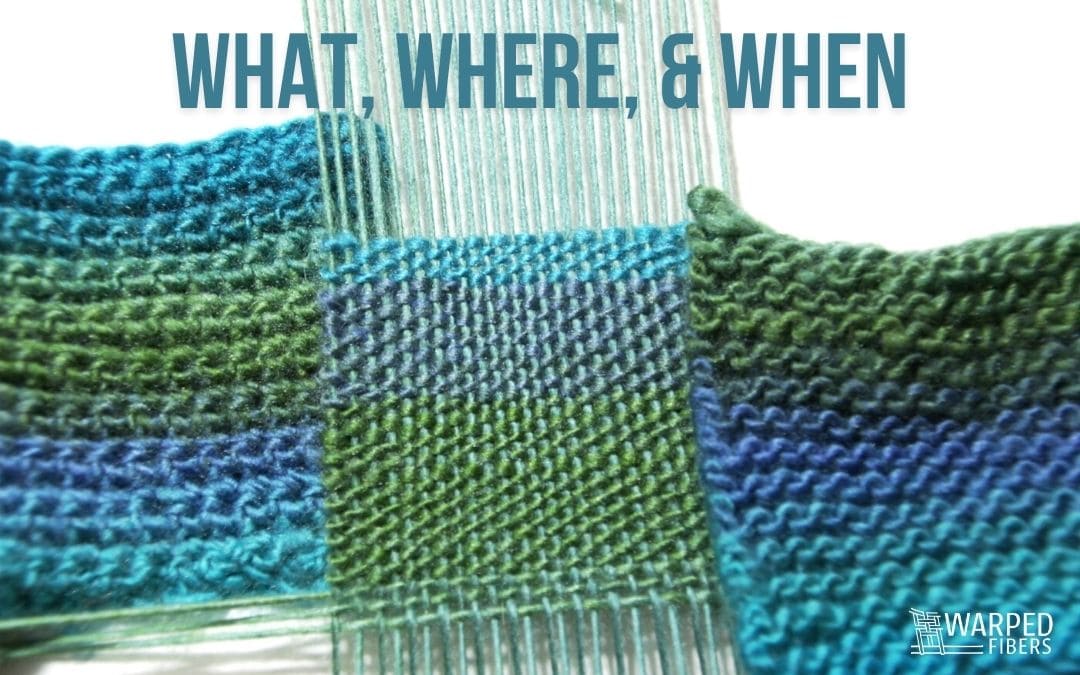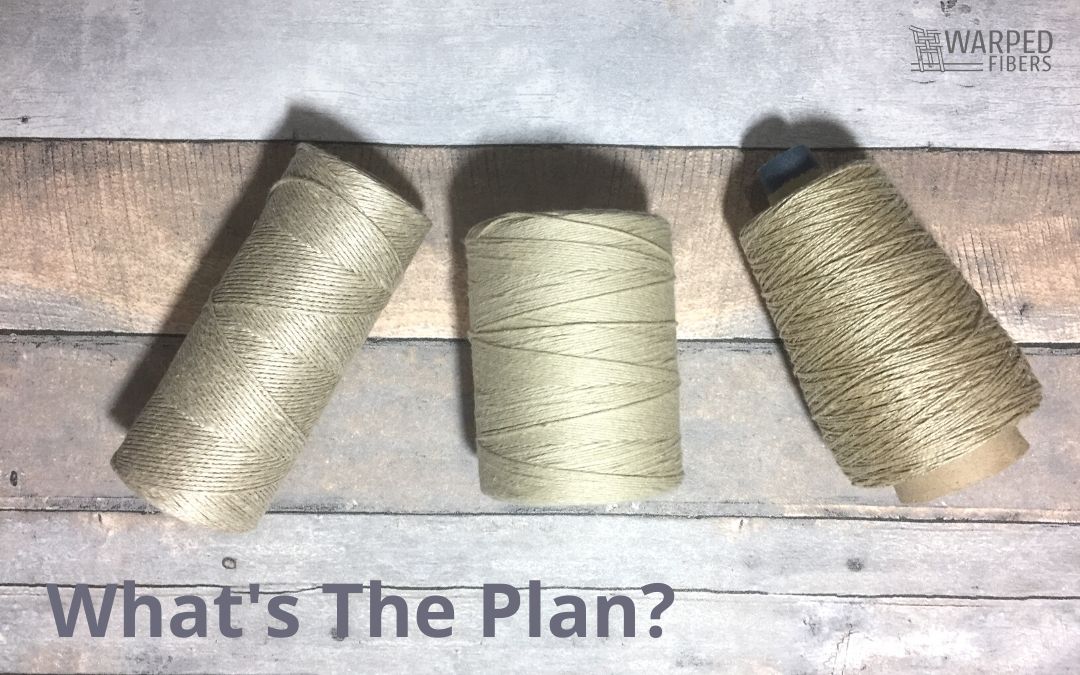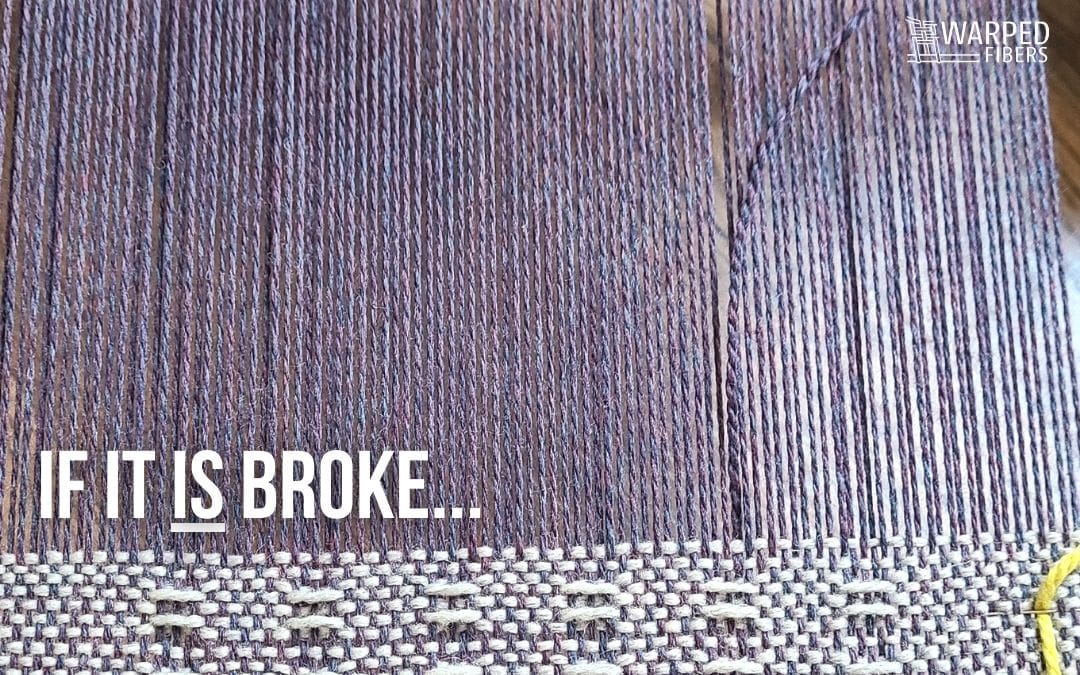Never woven before? Need a refresher? No problem! You are in the right place!
As you read through the blog posts and take classes there are weaving terms that are going to continue to show up.
I have compiled a list of some weaving terms that you will encounter so you can sound like you know what you’re talking about!
12 weaving terms that you should know to get started!
Warp
The namesake of this blog! More commonly known as the vertical yarn in a weaving that accounts for the overall structure. Warp yarns are strong and able to withstand the tension from your floor or frame loom.
Weft
The horizontal threads that are passed over and under the foundation warp threads. A good way to remember this is that Weft Goes Left. I mean it also goes right… but that doesn’t rhyme. You get the picture. Weft can be anything from yarn to fabric to grass. Pretty much anything can be weft. Inspiring.
EPI
Ends Per Inch. This refers to the number of warps that reside in every inch of your weaving. This will determine the spacing of the warps. Warp spacing is incredibly important because it determines the kind of weaving you are making. A larger EPI will usually result in a more balanced weave (see below). A smaller EPI will usually result in a weft-faced weave. As in life – there are exceptions and it’s a bit more complicated than that, but that’s your general rule. Learn more about EPI HERE!
Plain Weave (Tabby)
Weave structure in which the weft passes over, then under consecutive warps. Think of it as over one warp and under the next. Repeat, repeat, repeat. A lot of types of weavings fit into this description – including balanced weave and tapestry.
You can learn more about the 3 Basic Weave Structures HERE!
Balanced Weave
One weaving in each hand… j/k.
Plain weave happens when there are equal parts warp and weft that are visible. This usually creates a thinner and better draping weaving. Balanced weavings usually have a higher EPI because the warp needs to be close enough that the weft does not completely compress.
Weft-Faced Weave
A type of weaving in which the weft completely covers the warp. This woven fabric is usually created with a smaller EPI which allows the weft to completely compress and create warp channels. A very common weft-faced weave is tapestry, but there’s more to it than that!
Read more about tapestry HERE!
Warp-Faced Weave
Weaving type in which the warp completely covers up the weft. This weave requires a very high EPI. Warp-faced weave is not as common as other weave structures, but it can create a really interesting effect. Especially when the weft is thick and bulky.
Frame Loom
Any sort of portable device that allows you to wrap your warp around it in order to weave. Usually has 4 sides (but not always…) A frame loom can be incredibly simple or incredibly complicated. Frame looms are generally portable so they are great for weaving on the go.
Learn about the different types of frame looms HERE!
Floor Loom
A large loom that makes weaving faster and easier. This device allows for larger and more complicated weavings. Some of the most common types of floor looms are Jack, Counter-Balance, and Counter-March.
Selvedge
The finished sides of your weaving. Sometimes spelled differently depending on where you are in the world. They are one of the hardest things to deal with when you are weaving.
You can learn about keeping your selvedges straight HERE.
Shed
The space that is created when you raise certain warps to pass your weft yarn through. Creating a shed while you are weaving is not always necessary, but it does usually makes weaving faster.
Skein
A bundle of yarn with a center-pull that is ready to use and doesn’t need to be wound. Usually oblong. You can find yarn skeins in craft stores in a variety of weights and fibers.
There are a lot more weaving terms that will pop up when talking about specific techniques or equipment. Don’t worry, I will go over them as they come up. Once you know these 12 weaving terms, you are ready to get started!
⇣ Love It? Share It! ⇣
You May Also Like

























very helpful
I’m so glad you found this helpful!
Can you tell me why an 1810 advertisement from a cotton factory in upstate NY would refer to “Cotton Warp and Filling” for sale to weavers….Would the warp have been a different weight or ??? from the filling, which I believe means weft?
Thanks–It is for a family history of the man who owned the cotton mill….
It’s hard to say, especially since I haven’t seen the advertisement myself. “Filling” has been used as a term for weft, although I haven’t seen it often. Warp is sometimes a different weight than weft, but really it depends on the type of weaving you are making. It’s possible they were just advertising it that way to show its versatility that it could be either warp or weft. Hope this helps!